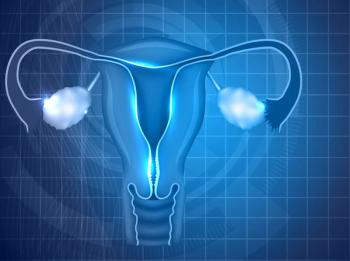
Immunotherapy Motolimod Fails to Improve Survival in Ovarian Cancer
The addition of the immune therapy motolimod to pegylated liposomal doxorubicin failed to improve overall survival among women with recurrent epithelial ovarian carcinoma in a randomized phase II trial.
The addition of the immune therapy motolimod to pegylated liposomal doxorubicin (PLD) failed to improve overall survival among women with recurrent epithelial ovarian carcinoma in a randomized phase II trial. There was a survival advantage, however, specifically in patients who experienced injection site reactions, which could help guide the use of this therapy.
Motolimod is a synthetic small molecule agonist of Toll-like receptor 8 (TLR8), delivered by subcutaneous injection. It functions by activating the innate immune system including monocytes, myeloid dendritic cells, and natural killer cells, thereby orchestrating an adaptive immune response. In the past, motolimod has been shown to enhance responses to anthracycline therapy, according to Bradley J. Monk, MD, of the University of Arizona College of Medicine in Phoenix, who presented
The GOG-3003 trial enrolled 297 women with recurrent or persistent epithelial ovarian, fallopian tube, or primary peritoneal carcinoma between 2012 and 2014; they were randomized to PLD plus motolimod or PLD plus placebo (149 patients in each group), administered until disease progression occurred. The median age in the study was 62.7 years, and most patients were white (93.6%). About half the patients (50.5%) had received one prior chemotherapy regimen, with slightly fewer (46.5%) receiving two prior lines, and 3% receiving three prior lines of chemotherapy.
The immune therapy failed to improve overall survival in the full cohort. The motolimod group had a median overall survival of 18.1 months, compared with 18.9 months with PLD and placebo, for a hazard ratio of 1.22 (P = .923). Similarly, the median progression-free survival was 4.8 months with motolimod and 5.2 months without it, for an HR of 1.21 (P = .943). The rates of response to therapy were also similar between the two groups, with an overall response rate of 20.9% with motolimod and 21.5% without it.
The researchers conducted a prespecified subgroup analysis based on whether or not an injection-site reaction (ISR) was present; 108 motolimod patients (73.5%) had an ISR, and 103 of those were within the landmark period of 56 days. The median overall survival among ISR-positive patients was 19.9 months, compared with 13.3 months in ISR-negative patients (P = .067).
A total of 42 PLD dose reductions or discontinuations were required in the motolimod group (28.6%), compared with 34 in the placebo group (23.1%); 74 reductions or discontinuations (50.3%) of motolimod were required, compared with 30.6% of placebo reductions or discontinuations. The same number of patients in each group had at least one serious treatment-emergent adverse event (40.8% in both); seven motolimod patients and six placebo patients had a serious adverse event resulting in death.
Translational analyses found no significant associations between overall survival or progression-free survival and an immune score based on tumor infiltrating lymphocytes, TLR8 single-nucleotide polymorphisms, or mutational status of BRCA and other DNA repair genes.
Though the addition of motolimod did not improve survival outcomes in this patient population, the finding that ISRs may be correlated to response could lead to better selection of patients for immunotherapies in the future, the researchers concluded.
Newsletter
Stay up to date on recent advances in the multidisciplinary approach to cancer.

















































































